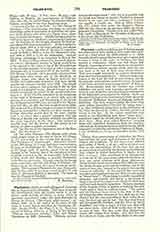

Pharbastus, titular see and suffragan of Leontopolis, in Augustamnica Secunda. This name is merely the transcription, with the Coptic article P, of the native name Harbait or Harbet, a name which is moreover reproduced under the form Kdpi3eveor in George of Cyprus (“Descriptio orbis romani”, ed. Gelzer, 706). It is the capital of the nome of this name in Lower Egypt described by Herodotus (II, 166); Strabo, XVII, i, 20; Pliny, V, 9, 11. There is a record of Bishop Arbetion at Nic ea in 325 (Gelzer, “Patrum nicmnorum nomina”, LX), and Bishop Theodorus in 1086 (Renaudot, “Historia patriarcharum alexandrinorum”, 458), but it is possible that the latter was bishop of another Pharbtetus situated further to the west, and which according to Vansleb was equally a Coptic see. John of Nikiu (Chronicle, CV) relates that under the Emperor Phocas (602-10) the clerics of the province killed the Greek governor Theophilus. Pharbatus is now called Horbelt, north of Zagazig in the Province of Sharqyeh; it has about 520 inhabitants.
S. VAILHE

